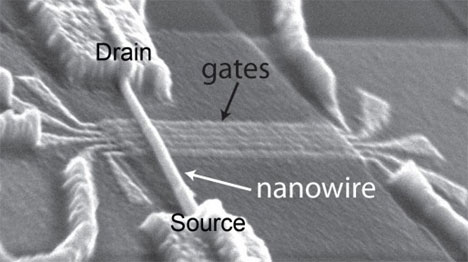
If quantum computing is ever going to become the standard, we need to develop better ways to control qubits, or quantum bits. Usually, the spin of these itty-bitty quantum computer building blocks is controlled with magnetic fields. Understandably, it’s hard to get this action to take place on a chip such as one would find in a computer. Now, a team of scientists at the Kavli Institute of Nanoscience at Delft University of Technology and Eindhoven University of Technology have come up with a way to manipulate qubits with electrical fields for the first time ever.

Qubits, like standard computer bits, can be in either a “0” or a “1” state. In qubits, the state is determined by the direction of the electron’s spin: spinning in one direction indicates a “0” state while spinning in the other direction denotes the “1” state. Figuring out how to spin the electrons with electricity rather than static is an important step forward in the development of super-fast quantum computers. But the team’s incredible advances don’t stop there: they also figured out how to embed the spinning qubits into super-tiny semiconductor nanowires, another important development in the race to build the mind-blowingly fast computers of the future.

